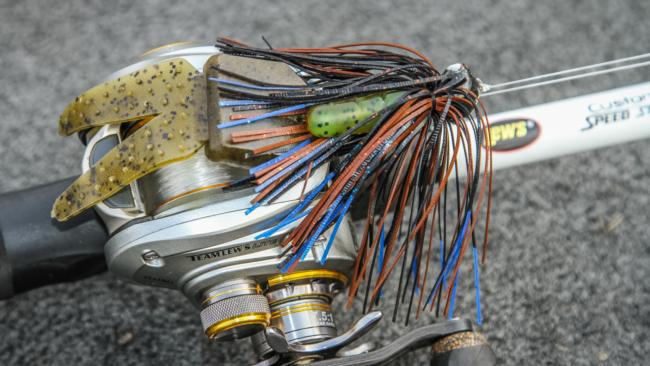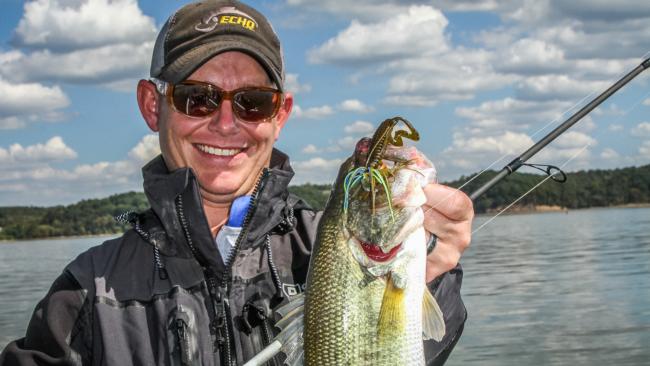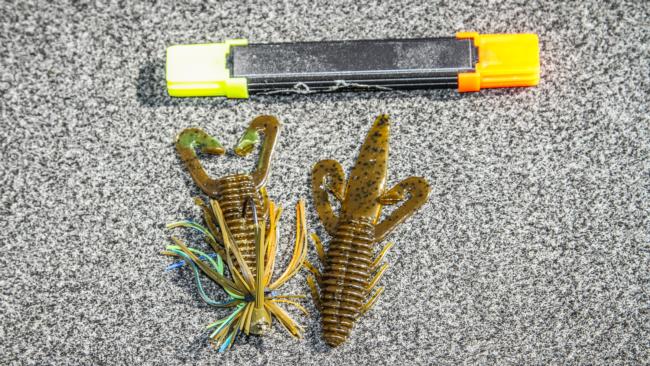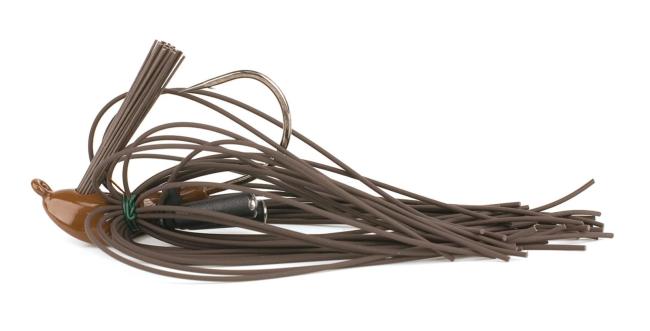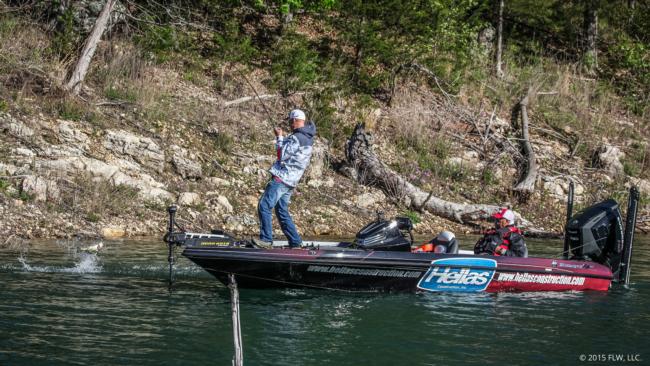Winter Jig Wisdom
4 tips for fishing jigs in the chilliest of conditions
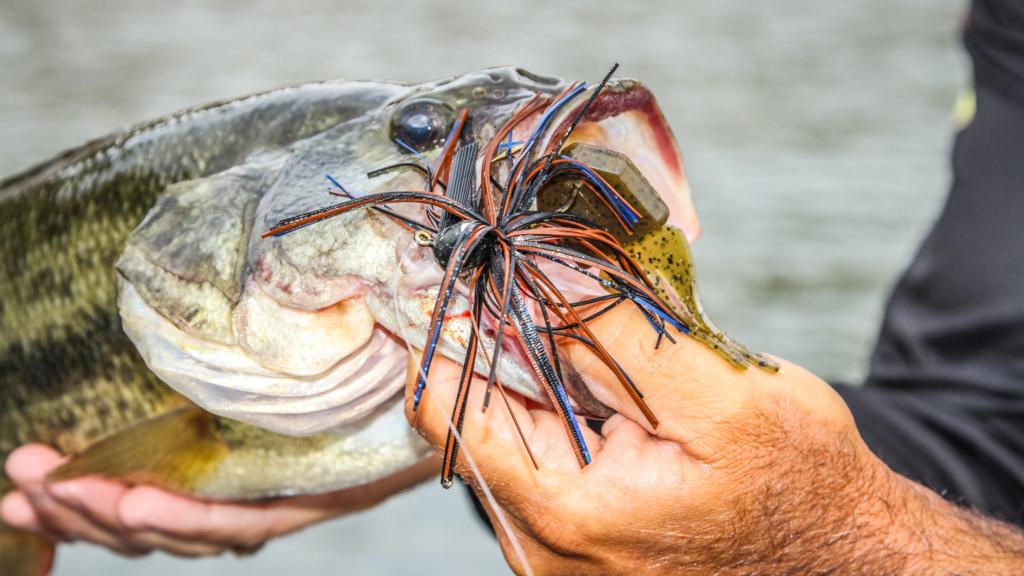
Winter offers some of the year’s best opportunities for catching big, fat bass, and no other bait category affords you more versatility than jigs. This time of year, you’ll sacrifice quantity for quality, so make the most of what the day brings by equipping yourself with a diverse array of jig presentations.
1. Find the Right Depth
In off-colored water with visibility of a foot or less, Walmart FLW Tour pro Terry Bolton relies on a classic 1/2-ounce Arkie-style flipping jig with a 4/0 hook and a Zoom Big Salty Chunk trailer. On his Kentucky Lake home waters, he favors channel swings and bluffs, but in any scenario, Bolton suggests letting conditions guide your approach.
“If you get a few days of warming weather, the fish could get up in 3 to 4 feet of water, but most of the time I expect to find them in 10 to 20 feet,” Bolton says. “They can be target-specific on, say, a log or rockslide, but generally, figuring out the depth they’re in seems to be more important.”
A hefty trailer can ride up the hook shank, turn outward and impede hook-ups by covering the hook point. Bolton prevents this by impaling an inch-long chunk of plastic worm on his jig’s hook shank before adding the trailer. Minimizing the trailer’s range of movement eliminates the risk of the hook fouling.
2. Fun with Finesse
Generally, a finesse jig with a light head, bristly skirt collar and short profile is a good bet for pressured fish, the post-frontal blahs or any tough bite.
Tour pro Andrew Upshaw likes a 5/16-ounce Outkast Tackle Finesse Jig in magic craw, crawdad, black and blue, or sunfish colors with a Gene Larew Biffle Bug Jr. trailer. Upshaw lessens his finesse jig’s length and slims down the profile by removing the tail of his trailer, so that only the swimming legs remain.
Upshaw targets channel bends and bluff walls linked to transition banks. The jig’s flat-bottom design helps keep it sitting upright and allows him to fish it slowly through the strike zone with the trailer simulating a defensive crawfish posture.
For enhanced appeal, he’ll add scent gel to the trailer’s hollow body and dress up the claws with an orange or chartreuse dye pen (depending on local forage coloration).
“You want to look at the bream and crawfish in your lake and see if their tails or claws are chartreuse or orange, and you want to match the hatch,” Upshaw says. “You don’t need a lot of color – just a touch to make it look like the flash of a tail or pincers under the water.”
3. Mop it Up
Costa FLW Series Southwestern Division standout Stephen Johnston says slow, nearly dead-sticking presentations can be the key to drawing strikes from fish that don’t want to move far for the few meals they’ll eat.
He does so with a mop jig or a hair jig, both of which deliver subtle, lifelike action even with minimal water movement. Creeping the jig along deep ledges or working it over riprap or timber will produce, as will Johnston’s favorite presentation.
“You can cast a mop jig against a stump, let it free-fall and let it sit there on the bottom,” he says. “That skirt moving looks like it’s alive, and those fish will ease over there and eat it.”
4. Grub Game
Lots of options here, but Tour pro Wesley Strader likes a simple approach with a Zoom Fat Albert grub rigged on a 1/8-ounce Stan Sloan’s Zorro Bait Co. Booza Bug Ninny Fly jighead. With this skirtless presentation, it’s all about simulating a vulnerable forage fish higher in the water column.
Through January, Strader will walk his bait down the “stair steps” of bluff ends and main channel points heading into creeks. But when February and early March bring prespawn staging, he swims the bait through suspended fish.
The key is counting down the bait, noting where strikes occur and then winding through the right depth. He fishes his jig and grub on 10-pound-test Gamma Edge fluorocarbon because the small-diameter line keeps the light bait from rising on the retrieve.
